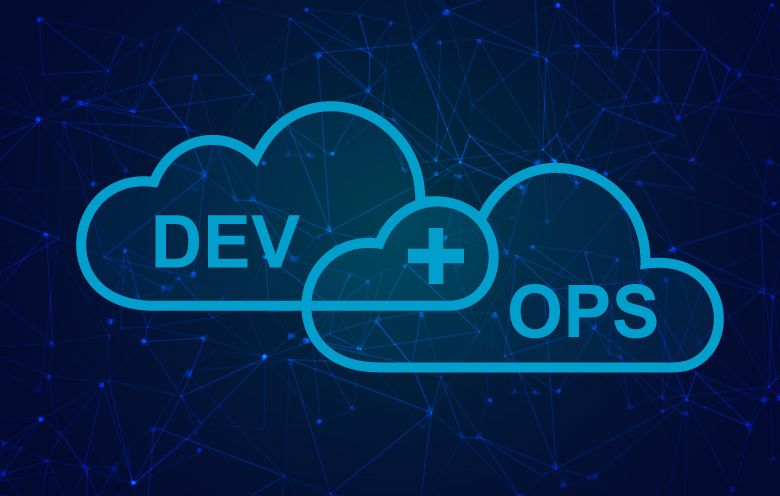How to Apply DevOps Strategy to Manage Cloud Infrastructure

What is Cloud-Based DevOps?
Picture this: your development team in New York, operations team in London, and servers scattered across the globe, all working in perfect harmony. That’s cloud-based DevOps in action. It’s the seamless integration of DevOps practices with cloud technologies, creating a powerhouse of efficiency and innovation.
At its core, cloud-based DevOps combines:
- Collaborative development practices
- Automated testing and deployment
- Cloud infrastructure and services
Why Does Cloud-Based DevOps Matter?
In today’s digital world, speed is king. Cloud-based DevOps is the nitro boost your software development needs. It’s not just about working faster; it’s about working smarter. Key benefits include:
- Scalability on demand
- Reduced time-to-market
- Improved collaboration across teams
- Cost-effective resource management
The Game-Changing Benefits of Cloud-Based DevOps
Imagine scaling your cloud infrastructure with a few clicks or deploying updates globally in minutes. That’s the power of cloud-based DevOps. It offers:
- Flexibility: Adapt quickly to market changes
- Efficiency: Automate repetitive tasks
- Innovation: Focus on creating, not maintaining
- Reliability: Enhanced system reliability through continuous monitoring and automation
- Agility: Faster development cycles for swift responses to user feedback and market demands
- Global Reach: Deploy applications and updates across different regions simultaneously
- Enhanced Security: Built-in security features to protect infrastructure and data
By embracing cloud-based DevOps, you’re not just keeping up with the competition – you’re setting the pace. It’s about fostering a culture of continuous improvement and innovation.
Top Cloud-Based DevOps Services
The right tools can make all the difference. Here’s a breakdown of the top cloud-based DevOps services:
CI/CD: Building and Deploying with Ease
- AWS CodePipeline – Automates build, test, and deploy; integrates seamlessly with AWS services and GitHub.
- Azure DevOps – A complete toolkit covering planning to operations with Pipelines, Repos, Test Plans, and more.
- GitLab CI/CD – Automates the development lifecycle with a hands-off approach, highly customizable.
Infrastructure as Code: Simplifying the Complex
- AWS CloudFormation – Template-based resource management with version control.
- Terraform – Multi-cloud friendly, manages infrastructure efficiently with a modular approach.
- Azure Resource Manager (ARM) – Declarative templates for Azure, offering fine-grained access control.
Monitoring and Logging: Keeping an Eye on Everything
- AWS CloudWatch – Full-stack monitoring with automation capabilities.
- Azure Monitor – Real-time telemetry analysis and troubleshooting.
- ELK Stack – Powerful search and analytics for performance insights.
Collaboration Tools: Team Up
- Slack – Centralized communication with tool integrations.
- Microsoft Teams – Unified platform with Office 365 for chat, video, and file sharing.
- Atlassian Jira – Agile project management for sprint planning and backlog management.
Security and Compliance: Lock It Down
- AWS Security Hub – Centralized security alert management.
- Azure Security Center – Continuous security assessment and threat detection.
- Google Cloud Security Command Center – Integrated threat intelligence for compliance and security.
Which of these tools are you excited to try? Or maybe you’re already using some?
Best Practices for Implementing Cloud-Based DevOps
Implementing cloud-based DevOps requires careful planning. Here are best practices for a successful transition:
Adopt a Phased Approach
- Start with non-critical systems to minimize risks.
- Gain experience and confidence with new tools before moving to mission-critical applications.
Ensure Continuous Integration
- Regularly merge code changes to detect issues early.
- Automate builds and tests for quality assurance.
Automate Everything
- Automate testing, deployment, and monitoring.
- Use tools like Jenkins, GitLab CI/CD, and AWS CodePipeline.
Monitor Continuously
- Implement real-time monitoring with AWS CloudWatch, Azure Monitor, and ELK Stack.
- Gain insights into system performance and optimize resource usage.
Train Your Team
- Provide regular training on the latest DevOps tools and practices.
- Conduct workshops and certifications to boost productivity and innovation.
Real-World Success Stories
Etsy’s Use of Google Cloud for CI/CD
Etsy, a global marketplace, streamlined deployment using Google Cloud Build and Kubernetes Engine (GKE). By automating CI/CD pipelines, Etsy reduced deployment times and minimized human errors.
Spotify’s Integration of Terraform and AWS CloudWatch
Spotify automated infrastructure management with Terraform and used AWS CloudWatch for performance monitoring, ensuring system reliability and rapid issue resolution.
Lessons Learned:
- Automation: Enhances efficiency and minimizes human errors.
- Monitoring: Essential for maintaining performance and quick issue resolution.
- Scalability: Cloud platforms allow applications to handle variable loads effectively.
- Training: Continuous learning improves DevOps efficiency.
Future Trends in Cloud-Based DevOps
Cloud-based DevOps is evolving rapidly, with several key trends shaping its future:
1. AI and Machine Learning Integration
- Predictive Analytics: Forecasts issues based on historical data.
- Automation: AI-driven systems detect and resolve issues autonomously.
2. DevSecOps (Enhanced Security Measures)
- Integrated Security: Built into every DevOps phase for continuous assessment.
- Real-Time Threat Detection: Tools like AWS Security Hub and Azure Security Center for immediate responses.
3. Serverless Architecture
- Infrastructure-Free Development: Platforms like AWS Lambda and Azure Functions remove server management burdens.
- Cost Efficiency: Reduces operational costs while maintaining agility.
4. Increased Adoption of DevOps Platforms
- Unified Solutions: Platforms like Azure DevOps and GitLab provide a complete DevOps ecosystem.
- Enhanced Collaboration: Integrated tools improve workflow efficiency.
5. Kubernetes and GitOps
- Container Orchestration: Kubernetes manages scalable containerized applications.
- Automated Infrastructure Management: GitOps ensures consistency and reduces configuration errors.
Final Thoughts
Cloud-based DevOps is revolutionizing software development by enhancing efficiency, scalability, and security. By integrating AI, automation, security, and serverless architectures, companies can future-proof their workflows.
Explore Forgeahead’s cloud-based DevOps services to stay ahead in the tech landscape. Implement cutting-edge solutions to drive innovation, optimize workflows, and ensure your organization’s success.